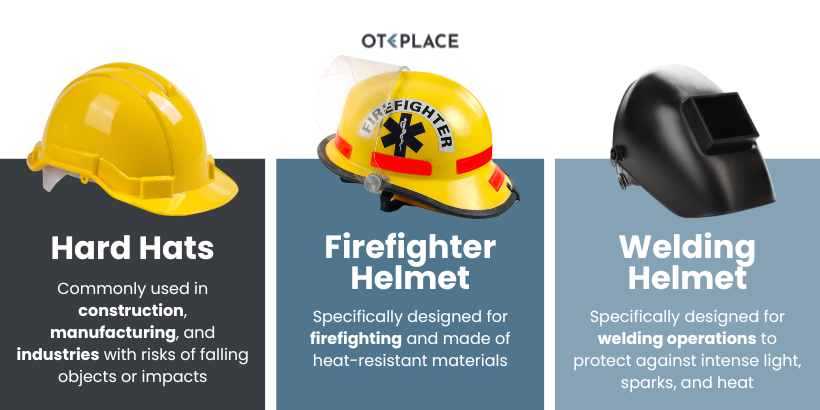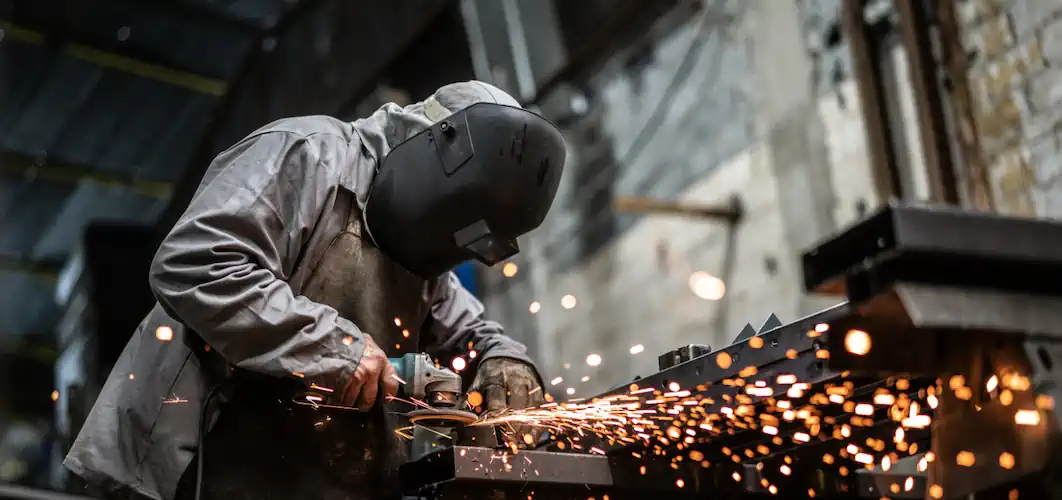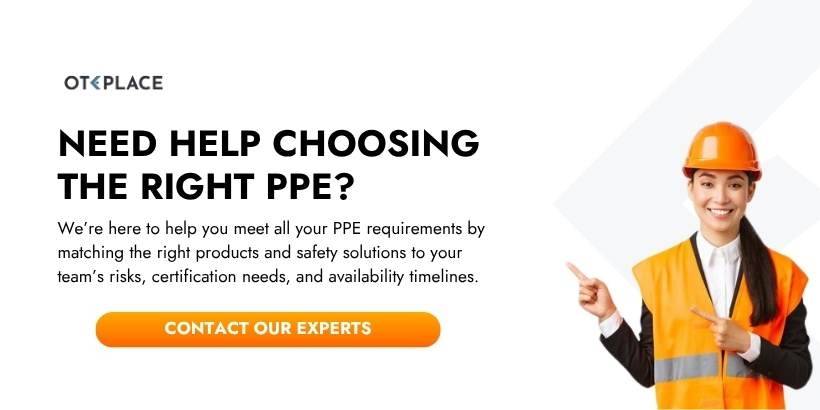Choosing the Right Safety Helmet for Your Industry: A Practical Guide
Are you working in a high-risk industry where safety is of utmost importance? One essential piece of personal protective equipment (PPE) you shouldn't overlook is a safety helmet. With so many options in the market, how do you select the right safety helmet for your work environment?
This comprehensive guide will help you learn choose the best safety helmet based on your team's industry and risks.

Table of Contents
-
The Importance Of Safety Helmets In the Workplace
-
Different Types Of Safety Helmets
-
Industry-Specific Safety Helmet Requirements
-
Factors To Consider When Choosing A Safety Helmet
-
Proper Fit And Adjustment Of Safety Helmets
-
Safety Helmet Maintenance and Care Tips
-
Choosing the Right Safety Helmet for Your Industry
The Importance Of Safety Helmets In the Workplace
Safety helmets are essential for protecting workers from head injuries caused by falling objects, impact, and electrical hazards. They absorb shock, reduce injury risk, and promote a culture of safety.
In industries like construction, mining, and manufacturing, the right helmet can mean the difference between a close call and a serious injury. Selecting the right type of head protection for your industry is crucial because not all helmets are equal. Different industries have unique requirements and risks, and choosing the wrong helmet can compromise your safety and the safety of your team.

Different Types Of Safety Helmets
Different tasks and environments require different types of safety helmets. Here are the most common types:
- Hard Hats:
Made from durable plastic, hard hats feature a suspension system inside to absorb shock and pressure to provide comfort. They are commonly used in construction, mining, and manufacturing. T - Bump Caps:
Bump caps are a lighter alternative to hard hats and are suitable for low-impact environments like food processing or warehousing. They offer protection against minor bumps and scrapes but do not provide the same level of impact resistance as hard hats. - Fire Helmets:
Fire helmets are specifically designed to protect firefighters from heat, flames, fall hazards, and other dangers encountered during firefighting operations. They typically feature a heat-resistant shell, a face shield, and an insulated lining to provide thermal protection. - Rescue Helmets:
Used by emergency responders, they offer protection against heat, flames, falling debris, and electrical hazards. Rescue helmets often feature a face shield, integrated communication systems, and a high-visibility outer shell. - Electrician Helmets:
They feature non-conductive materials and protect against electric shocks. Electrician helmets often include a face shield or a visor for eye protection, insulation, and arc flash protection. - Industrial Safety Helmets:
TCustomizable for petrochemical, manufacturing, and pharma sectors. - Climbing Helmets:
Ideal for mountaineering and construction at heights, with high durability and ventilation.
Industry-Specific Safety Helmet Requirements
Each industry has unique safety helmet regulations. Understanding theseindustry-specific requirements ensures compliance and maximizes safety.
- Construction Industry: Construction sites are known for their inherent risks, such as falling objects, debris, and potential falls from heights. In the construction industry, Helmets should meet ANSI/ISEA Z89.1-2014, minimum Class C, to protect against falling objects and electrical hazards.
- Oil and Gas Industry: The oil and gas industry present unique hazards, including the risk of fire, explosions, and exposure to chemicals. Safety helmets for this industry Requires fire-resistant helmets meeting ANSI/ISEA and possibly NFPA 1977 or EN 443.
- Mining Industry: Mining operations involve working below ground levels with the risk of falling objects from any angle and dust exposure. Safety helmets for the mining industry should meet the ANSI/ISEA Z89.1-2014 standard and the Mine Safety & Health Administration (MSHA) guidelines for multi-directional impact protection.
- Manufacturing Industry: Depending on the sub-industry (e.g., food, chemical), helmets should comply with ANSI standards and additional certifications like food-grade or chemical resistance.

Factors To Consider When Choosing A Safety Helmet
To choose the best safety helmet, consider these features:
1. Impact Resistance
The primary function of a safety helmet is to protect your head from impact. Look for helmets that are tested and certified to withstand high-impact forces from fall hazards. The ANSI/ISEA Z89.1-2014 standard provides guidelines for impact resistance, and helmets meeting this standard offer reliable protection.
2. Comfort
A comfortable safety helmet is more likely to be worn consistently. Look for helmets with adjustable suspension systems and padded interiors to ensure a secure and comfortable fit. Ventilation features can also help prevent overheating during long work hours.
3. Durability
Safety helmets should withstand the rigors of your industry's work environment. Look for helmets made from high-quality materials that can resist impact, chemicals, and extreme temperatures. The helmet's shell and suspension system should be durable and long-lasting.
4. Visibility
In industries where visibility is crucial, such as construction or roadwork, consider helmets with high-visibility colors or reflective strips. This enhances visibility and reduces the risk of accidents in low-light conditions.
5. Compatibility
If you frequently wear additional safety equipment, such as earmuffs or visors, ensure the safety helmet is compatible with these accessories. Look for helmets with accessory slots or integrated attachment points.

Proper Fit And Adjustment Of Safety Helmets
A properly fitted helmet maximizes safety and comfort:
- Size: Measure your head and use manufacturer sizing guides.
- Suspension System: Adjust for a snug, balanced fit. The helmet should sit level on your head, with the front brim about an inch above your eyebrows.
- Chin Strap: Secure it to prevent slippage during impact. Adjust the chin strap to ensure a comfortable fit, with enough tension to prevent the helmet from sliding or falling off.
Regularly check the fit of your safety helmet and make adjustments as needed. An ill-fitting helmet can compromise its effectiveness and expose you to unnecessary risks.
Safety Helmet Maintenance and Care Tips
Proper maintenance extends the life of your safety helmet and ensures ongoing protection:
- Cleaning: Wash regularly with mild soap and water. Avoid solvents that could weaken the material.
- Inspection: Check for cracks, dents, fading, or worn suspension parts. Replace immediately if damage is found.
- Storage:Keep in a cool, dry place away from direct sunlight or chemicals.
- Replace as Needed: SFollow manufacturer guidelines for replacement, typically every 2 to 5 years, or sooner after impact.
By following proper maintenance and care practices, you can ensure that your safety helmet remains in good condition and provides optimal protection for an extended period.
Choosing the Right Safety Helmet for Your Industry
Selecting the perfect safety helmet for your industry is a step towards safeguarding yourself and your team. Understanding the importance of safety helmets, the different types available, industry-specific requirements, and key factors and features will help you make informed decisions to prioritize safety.
Look for safety helmets that meet the necessary certifications and standards, ensure a proper fit and adjustment, and practice regular maintenance and care. Invest in the right safety equipment and you invest in your future and create a safer work environment for everyone.
Ready to protect your team with the certified safety helmets? Explore our collection of safety helmet, where performance, comfort, and protection meet.

























